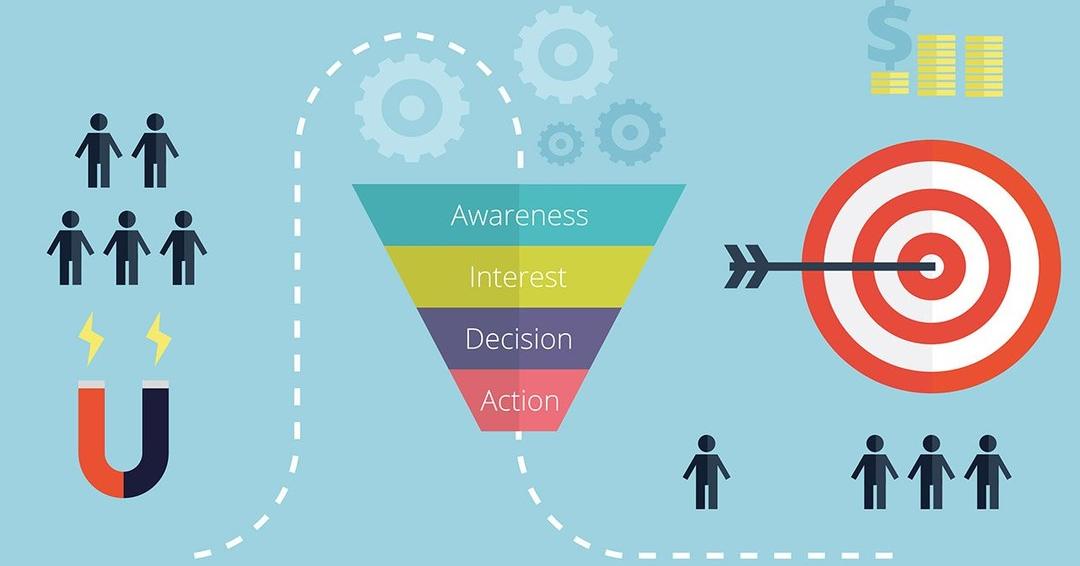In today’s competitive business landscape, understanding the customer journey is essential. This journey, often visualized through sales and marketing funnels, illustrates the steps potential customers take, from becoming aware of a product or service to making the final purchase decision.
While the sales funnel focuses on converting leads into customers, the marketing funnel emphasizes the entire customer lifecycle, from awareness to advocacy. The artful integration of these two models — sales funnel vs. marketing funnel — can provide valuable insights, allowing businesses to fine-tune their strategies for maximum impact and success.
What is the Customer Journey?
The customer journey refers to the various stages a potential customer goes through before purchasing. The process starts when the customer becomes aware of a product or service to the final purchase decision. Businesses need to understand the customer journey because it can help them create effective marketing and sales strategies that resonate with potential customers at each stage.
The customer journey can be broken down into different stages or phases, such as awareness, consideration, decision, and retention. Understanding each journey stage can help businesses create targeted and relevant messaging that speaks to customers’ needs and desires at each stage.
One way to visualize the customer journey is through the use of funnels. Marketing and sales funnels are popular frameworks for mapping out the customer journey, and they both offer different insights into how customers interact with a business at each stage. Let’s take a closer look at each type of funnel.
Sales Funnel vs. Marketing Funnel
In this section, we’ll explore two pivotal concepts shaping today’s business strategies – the “sales funnel” and the “marketing funnel“. Let’s delve into their nuances.
What is a sales funnel?
First, let’s contemplate the sales funnel, a concept as old as selling itself. Picture a cone, wide at the top, narrowing down as you go further — that’s a typical sales funnel in its simplest form. It starts with a broad audience (the top) and gradually narrows to those who eventually purchase your product or service (the bottom). The stages? Awareness, Interest, Decision, and Action — as straightforward as AIDA.
However, the sales funnel concept has its limitations. It suggests a linear, one-directional journey, whereas, in reality, customer behavior is as unpredictable as weather patterns — an intricate dance of curiosity, hesitations, backtrackings, and leaps of faith.
What is a marketing funnel?
This strategy integrates aspects of customer retention and advocacy. The stages involve Awareness, Consideration, Conversion, Loyalty, and Advocacy. Here, we see a more holistic approach, where the customer isn’t just a potential sale but a possible brand advocate.
The marketing funnel embodies the new age marketing mantra — every customer interaction, no matter how minute, significantly shapes the overall brand perception. It’s about creating a harmonious symphony of experiences that draws customers and transforms them into raving fans, even brand ambassadors.
Which funnel should you focus on?
The answer to this question depends on your business goals. Both the sales funnel and the marketing funnel are critical components of a successful customer journey. However, their focus and purpose differ.
The sales funnel is primarily concerned with converting leads into paying customers. It is a linear process that typically starts with lead generation, lead qualification, and sale closing. If your business aims to boost revenue and sales, you should prioritize the sales funnel.
On the other hand, the marketing funnel focuses on building brand awareness, generating interest, and nurturing leads through the customer journey. If your business aims to build long-term customer relationships and increase lifetime value, you should focus on the marketing funnel.
The ideal strategy here is to use both funnels together in a complementary manner. By aligning your marketing efforts with the sales funnel, you can drive more qualified leads to your business and increase the chances of converting them into customers.
Similarly, by nurturing leads through the marketing funnel, you can build trust, establish authority, and create a loyal customer base that keeps coming back.
How to Use Both Funnels Together for Maximum Results
The sales funnel and marketing funnel work best when used together. This integration ensures all marketing efforts align with the sales process, creating a consistent and engaging experience for the customer.
To achieve this, developing a solid content marketing strategy that works in conjunction with your sales funnel is essential. You can start by:
- Building a strong brand image that aligns with your target audience. This will help you create content that resonates with your potential customers.
- Create compelling content that engages your audience at different stages of the funnel. By developing targeted content for each funnel stage, you can nurture your leads into becoming customers.
- Incorporate various digital marketing techniques to promote your brand. Leverage social media, email marketing campaigns, and other online channels to increase brand awareness.
- Align your sales and marketing teams. This will help ensure that your content marketing strategy aligns with the sales process.
- Analyze and track your results. By measuring your marketing efforts and tracking their effectiveness, you can optimize your funnel for maximum results.
Using the sales and marketing funnels together can be a game-changer for businesses. With an effective content marketing strategy, you can create a seamless experience for your customers that builds brand loyalty and leads to higher sales. So, get started today and begin unlocking the power of these two funnels.
Wrapping up
Both the sales funnel and marketing funnel serve as crucial tools to understand and navigate the complex customer journey. Each, with its unique focus, plays a significant role in shaping a business’s strategy.
The sales funnel is essential in converting leads into sales, while the marketing funnel enables a broader perspective, encapsulating the entire customer lifecycle. However, the true power lies in leveraging both funnels in harmony to offer a more comprehensive, consumer-centric approach, thereby maximizing business success.
By integrating these models, businesses can build meaningful relationships with their customers, boost brand loyalty, and ultimately drive growth.
